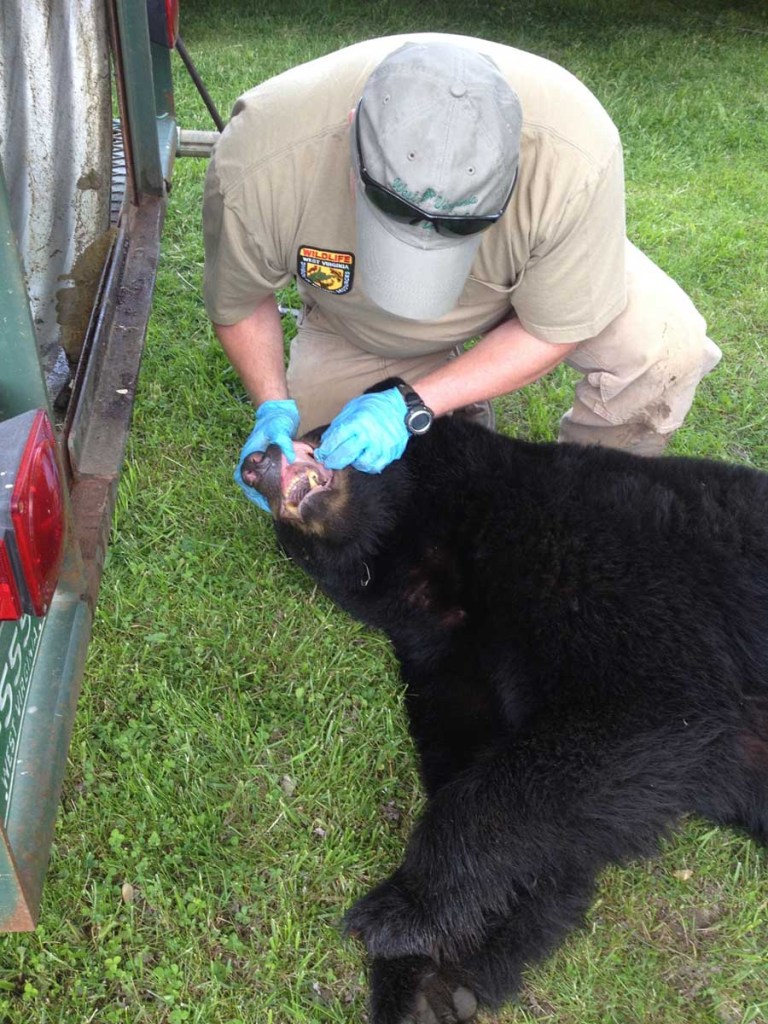Black bears had a pretty active early summer. Here’s why.
Published 11:30 am Monday, July 11, 2016

- Due to a variety of factors, bears are more often seen outside of their natural habitat now than at other times of the year.
By now, you’ve certainly seen them — on your local news or, quite possibly, even in your backyard. It isn’t your imagination. Bears, black bears in particular, are out in full force this time of year, especially throughout communities and areas in the southern and southeastern United States. But why?
Anyone who studies bears will tell you that the animals can have somewhat of a split personality when it comes to dealing with humans. Sometimes, they are interesting woodland creatures — stumbling and tumbling through the wilderness ala the numerous YouTube videos showcasing their funny escapades. Other times, bears can be a terrifying and predatory force, leaving disaster and disarray in their wake. But mostly, they are occupied with just being a bear; it’s a full-time job for them. Remember last summer when bear made his way through a Central Florida neighborhood, grabbed some dog food, and took a nap? Or when a family of black bears commandeered a New Jersey family’s backyard swimming pool…and one broke a young girl’s “floatie”? That viral video favorite is a prime example of bears being bears — while getting some sun and making some waves.
The American Black Bear, known formally as Ursus americanus, isn’t out to scare people, pillage subdivisions…or even gain viral video notoriety. Quite the contrary, experts say. As spring turns into summer, sightings and incidents involving bears rise steadily, but there’s good reason. Call it bear season.
“Bears leave the den in the spring at a time when natural food sources are at their lowest point of the year,” Colin Carpenter, a wildlife biologist and black bear project leader for the West Virginia Division of Natural Resources, said. “We typically start receiving consistent nuisance bear complaints in April, with the number of complaints increasing steadily throughout the month of May.”
Carpenter noted that May or June are generally the months with the most bear complaints and sightings each year. As natural food sources like serviceberries, blueberries, raspberries and blackberries start becoming available, nuisance complaints subside.
There are several reasons why bear activity peaks in late May through June. Yearling bears that find themselves “kicked out” by their mothers and are on their own for the first time. Males have increased their movements because females are beginning to come into heat, as peak of breeding for bears is usually mid-June through mid-July. The summer food sources are not yet ripe. Bears have been losing weight since leaving the den and there has been little to feed on other than green vegetation. All of these factors tend to correlate with the influx of bear-related happenings reported by the media.
Last month, a 4-year-old black bear was shot and killed in Garrett County, Maryland after being discovered in a chicken coop. The bear had previously been trapped and fitted with a radio collar after entering a home in 2014. Thought to be a nuisance, this is quite common when it comes to bears.
According to research, more than 90 percent of black bear deaths after the age of 18 months are the result of gunshots, trapping, motor vehicle accidents, or other interactions with humans, which limits the lifespan of black bears from a possible 30 years in the wild to just about 10 years.
Known to be solitary, yet roaming animals, a good number of black bears can be found in states like Georgia, Pennsylvania, Tennessee, Virginia and West Virginia. That said, if you happen to see one just traveling through, wish him well and hope he keeps traveling on. Keep your garbage and pet food out of sight and he will probably head on down the road.
As the months ahead grow cooler and winter approaches, the number of incidents involving black bears will decrease, thanks to hibernation. According to National Geographic, black bears spend the coldest months dormant in their dens, feeding on body fat they built up during the summer and fall seasons.
While these bears can still pose a threat to unsuspecting humans, understanding and knowing more about their habits can be lifesaving for all parties involved.
The Dalton, Georgia Daily Citizen contributed to this story.





